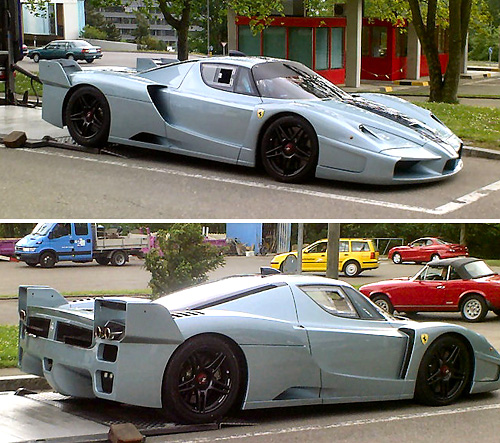
Built with Japanese backing, Le Mans-winning driver Vern Schuppan created his very own street-legal Porsche 962. These cars were built as a tribute to his victory at the 1993 Le Mans behind the wheel of a Porsche 956. Since then, the Porsche 956 and its 962 IMSA-spec have become one of the most successful prototype racecars in history, claiming over 130 victories.
Specific details on how the Schuppan cars came about are quite rare. Supposedly five or six examples were built by Modena Cars in High and complied with either Japanese or German safety laws. Each car was entirely new since Schuppan manufactured his own chassis and body based on 962 designs. The only Porsche-sourced component was the engine which was the same used in 962C North American IMSA car, that is, the air-cooled, 3.3 liter, twin turbo version.
The price amount was recently modified from 2 500 000. Karl Ludvigsen wrote in his book, Porsche: Excellence was Expected, that the price was 195 million yen which would have amounted to 1.5 USD in 1994. In either case, the 962CR, when new, was one of the most expensive cars ever produced.
After payment failed to arrive when two cars were shipped to Japan, Schuppan was forced to declare bankruptcy. The 962CR remains as the only car Vern Schuppan has ever made.
engine 60 Degree V12 position Mid Longitudinal aspiration Natural valvetrain DOHC, 4 Valves per Cyl displacement 7291 cc / 444.9 cu in bore 91.5 mm / 3.6 in stroke 92.4 mm / 3.64 in power 536.9 kw / 720 bhp @ 6700 rpm hp per litre 98.75 bhp per litre drive wheels Mid Engine / RWD front brakes Vented Carbon Fibre Discs w/6-Pot Calipers, Hydrualic Assist, ABS f brake size 381 mm / 15.0 in rear brakes Vented Carbon Fibre Discs w/4-Pot Calipers, Hydraulic Assist, ABS r brake size 356 mm / 14.0 in front wheels F 45.7 x 26.7 cm / 18 x 10.5 in rear wheels R 45.7 x 31.8 cm / 18 x 12.5 in front tire size 295/35 ZR18 rear tire size 345/35 ZR 18 steering Rack & Pinion w/Power Assist f suspension Double Wishbones w/Push-Rod Acuated Coil Springs, Shock Absorbers, Anti-Roll Bar r suspension Double Wishbones w/Push-Rod Acuated Coil Springs, Shock Absorbers, Anti-Roll Bar wheelbase 2670 mm / 105.1 in front track 1665 mm / 65.6 in rear track 1594 mm / 62.8 in length 1855 mm / 73.0 in width 1950 mm / 76.8 in height 1100 mm / 43.3 in transmission 6-Speed Sequential w/Paddle-Shift Operation gear ratios 3.235:1, 2.097:1, 1.560:1, 1.231:1 0 - 60 mph 3.6 seconds

























